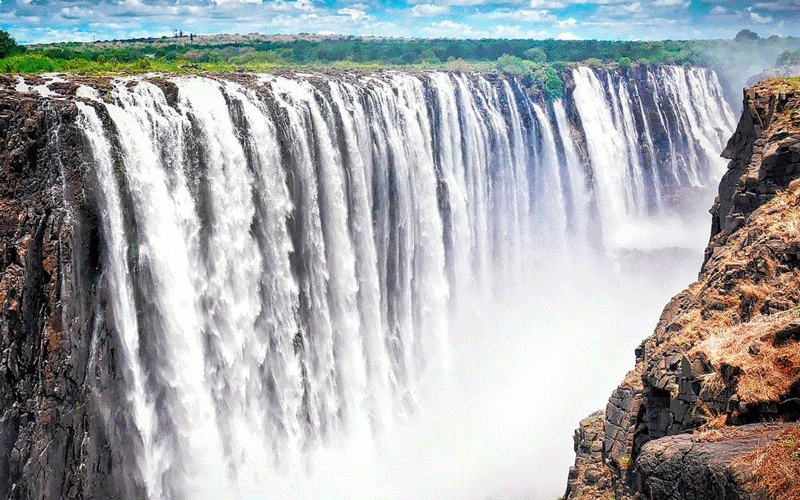
AS the sun rises over Harare, its rays pierce through the sky, hot at 9am, illuminating the stark reality of climate change gripping urban centres across Zimbabwe. From rising temperatures to increased flooding, cities are not only victims of climate change but also significant contributors to the crisis.
Various stakeholders — from climate officials to residents — are coming together to forge innovative solutions that could reshape the future of urban living in Zimbabwe.
Nyasha Moyo, a climate expert and engineer, reflects on the urgency of addressing climate change in Zimbabwe.
“Last summer, Harare experienced severe flooding after just a few hours of rain,” she recounts.
“It was a wake-up call for many who had never considered climate change a local issue.”
As Zimbabwe’s urban centres burgeon, they account for a growing share of the country’s greenhouse gas emissions, creating a vicious cycle where cities contribute to climate change while simultaneously suffering from its effects. In response to these challenges, innovative urban solutions are emerging, categorised broadly into nature-based, technological, social and integrated approaches.
Harnessing ecosystems' nature-based solutions leverages on the power of ecosystems to mitigate climate impacts. Urban greening initiatives like tree planting and green roofs are gaining traction in cities like Harare and Bulawayo.
Resident Maria Lopez, who leads a community gardening project in her suburb, emphasises the importance of these initiatives.
“We are not just planting trees; we are creating green spaces that cool the air, absorb rainwater and provide habitats for wildlife,” she said. “It’s about restoring our connection with nature.”
However, experts like Moyo caution that these solutions are not without vulnerabilities.
“Nature-based solutions can be threatened by the climate impacts they aim to address,” she warned.
“For instance, extreme heat can stress urban greenery, reducing its effectiveness,” Moyo said.
The challenge is particularly pronounced in Zimbabwe, where erratic weather patterns and prolonged droughts pose significant threats to these initiatives.
“Technological innovations in urban planning alongside nature-based initiatives and technological solutions are emerging as critical components of urban planning,” Moyo said.
In addition, from innovative building materials to smart transportation systems, technology offers promising avenues for sustainable development, she said.
Engineer Donald Mhlanga, an infrastructure and urban planner, advocates for the integration of green building practices.
“We’re using retro-reflective materials and energy-efficient designs to reduce the carbon footprint of new developments,” he says.
“The goal is to create buildings that not only consume less energy but also contribute positively to the environment.” Yet, these technological advancements come with challenges.
“They can be costly and resource-intensive,” Mhlanga admits. “We need government support and community buy-in to make these solutions viable for all urban residents.”
As Zimbabwe's economy increasingly informalises, businesses are abandoning central business districts like Harare and Bulawayo due to chaos and crumbling infrastructure. This shift underscores the urgent need for urban resilience strategies.
“Innovative solutions must be developed to address these challenges, ensuring that cities adapt to climate change while fostering sustainable economic growth and stability in increasingly volatile environments”, observes Harare-based Shepard Zvigadza, a climate specialist.
“While technological and nature-based solutions are critical, social solutions play an equally vital role in fostering long-term sustainability. Engaging communities in behaviour change is essential for effective implementation,” he said.
Sarah Patel, a community organiser in Bulawayo, highlights the importance of grassroots efforts.
“We need to shift mindsets and behaviours around waste management, transportation, and energy use,” she said.
“This requires collaboration between government, businesses and residents.” Patel’s organisation, Eco-Commute Initiative, recently launched a campaign encouraging public transport use and carpooling.
“It’s about fostering a sense of community responsibility,” she says. When people feel invested in their environment, they are more likely to take action.
”However, as businesses flee urban centres due to chaos and poorly maintained infrastructure, the challenge of community engagement becomes more complex,” she observes.
According to Washington Zhakata, principal director in the Climate Change Department, “One of the most effective ways to tackle climate change is through integrated solutions that combine various approaches. For instance, urban greening can be paired with technological innovations like smart irrigation systems, creating a holistic strategy for urban resilience.”
He noted that integration is complex, involving multiple stakeholders from government agencies to local communities. But it is essential for maximising the impact of our efforts.
Patel points to successful case studies where cities worldwide have implemented integrated solutions, resulting in reduced emissions and improved urban living conditions.
“Cities that embrace collaboration and innovation will be better equipped to face the challenges of climate change,” she said.
As Zimbabwean urban centres grapple with the realities of climate change, the path forward requires a multifaceted approach. Community engagement, supportive policy making and awareness-raising are vital components for success.
However, the economic landscape poses significant hurdles. Many residents and businesses are struggling to engage meaningfully with climate solutions amid deteriorating infrastructure and economic uncertainty.
Local urbanite Andrew Kandawasvika shares his vision for the future: “I want my city to be a place where people feel connected to nature and each other. We need to work together to create a sustainable future.”
As the economy continues to informalise, fostering such connections will be critical. It’s still early days yet, with the stories of resilience, adaptation and innovation far-fetched in Zimbabwe’s urban landscape.
The introduction of Community gardens and smart technology, collaboration between residents, experts and government officials illustrates a call for serious collective commitment to transforming cities into resilient havens against climate change.
In a world where urban centres hold both the key to climate change mitigation and the weight of its consequences, the journey towards sustainable urban living must begin now to navigate the complexities of climate change and build cities that thrive for generations to come.










